



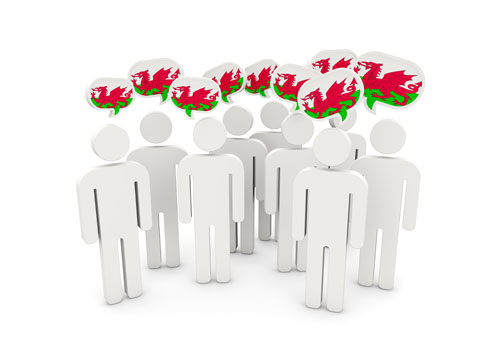
A plan that describes the process of building a new national curriculum for Wales. The aim of the plan is to create a new curriculum that will enable learners to enjoy teaching and learning and inspire them to succeed. As part of the plan the Welsh Government is committed to seeing the Welsh language thrive. Welsh will remain a compulsory element of the curriculum for all learners up to the age of 16. The new curriculum will ensure that all learners are able to develop their Welsh language skills and use the language confidently in different contexts.
The 2050 Welsh Language Strategy sets out the Welsh Government's long-term plan to reach the target of one million Welsh speakers by 2050. In order to meet the target, the Welsh Government wants to expand Welsh-medium provision in the early years in order to support progression into Welsh-medium education. The plan also aims to increase the proportion of each school year group receiving Welsh-medium education and increase the number of primary teachers who are able to teach through the medium of Welsh.
The Strategy was published in April 2010 to develop effective provision of education from nursery through to further and higher education. The Welsh Government's vision is for an education system that meets the demand for Welsh-medium education and guarantees an increase in the number of people who are fluent in Welsh and able to use the language with their families, communities and in the workplace. The Welsh Government aims to provide an education system that enables more learners of all ages to acquire a wider range of Welsh language skills.
The document outlines the Welsh Government's priorities as part of the development of the long-term Welsh language strategy.
Regulations that set standards in relation to the conduct of local health boards, National Health Service trusts in Wales, community health councils and the Board of Community Health Councils in Wales. The standards clearly state what the organizations need to do to comply and clearly tell the user what to expect. The regulations set standards for service delivery, namely standards relating to the provision of services. The intention is to promote or facilitate the use of the Welsh language, or to work towards ensuring that the Welsh language is not treated less favourably than the English language.
Each local authority is required to produce and submit its Welsh in Education Strategic Plan (WESP) to the Welsh Government. The plans show how the authorities intend to achieve the aims and targets set out in the Welsh Medium Education Strategy. The Welsh Government's vision is to enable all learners to develop their Welsh language skills and to use the language confidently in everyday life. To achieve this vision, local authorities need to plan to make sure that all learners benefit from a first rate curriculum and that they enjoy learning and are inspired.
All Welsh-medium childcare settings have a language policy that is implemented through the immersion method. By committing to these policies, practitioners ensure that Welsh is the language used by children at all times while in Welsh-medium education. Each Welsh-medium education setting has its own language policy, which outlines the procedure for introducing Welsh to children.
The Foundation Phase Framework states that the Welsh Government is committed to developing and promoting the Welsh language.
The Welsh Government has prepared the 'Welsh in Education' Action Plan 2017-2021. The Welsh Government's vision is to enable all learners to develop their Welsh language skills and, ultimately, to use the language confidently in everyday life. Achieving this requires a world-class curriculum for success. One of the key steps is removing the term 'Welsh second language', by developing a single continuum for learning Welsh, with the same expectations for Welsh and English medium schools. The plan states that learners must have equal access to Welsh-medium education.
Cynllun sy’n disgrifio’r broses o adeiladu cwricwlwm cenedlaethol newydd i Gymru. Nod y cynllun yw creu cwricwlwm newydd a fydd yn galluogi dysgwyr i fwynhau addysgu a dysgu ac yn eu hysbrydoli nhw i lwyddo. Fel rhan o’r cynllun mae Llywodraeth Cymru wedi ymrwymo i weld y Gymraeg yn ffynnu. Bydd y Gymraeg yn parhau’n elfen orfodol yn y cwricwlwm i bob dysgwr hyd nes bydd yn 16 mlwydd oed. Bydd y cwricwlwm newydd yn sicrhau bod pob dysgwr yn gallu meithrin ei sgiliau iaith Gymraeg a defnyddio’r iaith yn hyderus mewn gwahanol gyd-destunau.
Mae Strategaeth Cymraeg 2050 yn nodi cynllun hirdymor Llywodraeth Cymru o gyrraedd y targed o filiwn o siaradwyr Cymraeg erbyn 2050. Er mwyn cyrraedd y targed, mae Llywodraeth Cymru am ehangu darpariaeth cyfrwng Cymraeg y blynyddoedd cynnar er mwyn cefnogi dilyniant i addysg cyfrwng Cymraeg. Mae’r cynllun hefyd yn nodi’r amcan o gynyddu cyfran pob grŵp blwyddyn ysgol sy'n derbyn addysg cyfrwng Cymraeg a chynyddu nifer yr athrawon cynradd sy'n gallu addysgu drwy gyfrwng y Gymraeg.
Cyhoeddwyd y Strategaeth ym mis Ebrill 2010 i ddatblygu darpariaeth effeithiol o addysg feithrin hyd at addysg bellach ac uwch. Gweledigaeth Llywodraeth Cymru yw cael system addysg sy’n ymateb i’r galw am addysg cyfrwng Cymraeg ac yn sicrhau cynnydd yn nifer y bobl sy’n rhugl yn y Gymraeg ac yn gallu defnyddio’r iaith gyda’u teuluoedd, yn eu cymunedau ac yn y gweithle. Nod Llywodraeth Cymru yw darparu system addysg sy’n ei gwneud yn bosibl i fwy o ddysgwyr o bob oedran feithrin amrywiaeth ehangach o sgiliau iaith yn y Gymraeg.
Mae’r ddogfen yn amlinellu blaenoriaethau Llywodraeth Cymru fel rhan o ddatblygiad y strategaeth iaith Gymraeg tymor hir.
Rheoliadau sy’n gosod safonau mewn perthynas ag ymddygiad byrddau iechyd lleol, ymddiriedolaethau Gwasanaeth Iechyd Gwladol yng Nghymru, cynghorau iechyd cymuned a Bwrdd Cynghorau Iechyd Cymuned Cymru. Mae’r safonau yn ei gwneud yn glir i’r sefydliadau beth sydd angen ei wneud i gydymffurfio, ac yn dweud yn glir wrth y defnyddiwr beth y gall ei ddisgwyl. Mae’r rheoliadau yn gosod safonau ar gyfer darparu gwasanaethau, sef safonau sy’n ymwneud â chyflenwi gwasanaethau. Y bwriad ydy hybu neu hwyluso defnyddio’r Gymraeg, neu weithio tuag at sicrhau nad yw’r Gymraeg yn cael ei thrin yn llai ffafriol na’r Saesneg.
Mae’n ofynnol i bob awdurdod lleol lunio a chyflwyno ei Gynllun Strategol y Gymraeg mewn Addysg (CSCA) i Lywodraeth Cymru. Mae’r cynlluniau’n dangos sut mae’r awdurdodau’n bwriadu cyflawni nodau a thargedau a amlinellir yn y Strategaeth Addysg Cyfrwng Cymraeg. Gweledigaeth Llywodraeth Cymru yw galluogi pob dysgwr i ddatblygu ei sgiliau iaith Gymraeg ac i ddefnyddio'r iaith yn hyderus mewn bywyd bob dydd. Er mwyn cyflawni'r weledigaeth hon, mae angen i awdurdodau lleol gynllunio ar gyfer sicrhau bod pob dysgwr yn elwa o gwricwlwm o'r radd flaenaf a’u bod yn mwynhau dysgu ac yn cael eu hysbrydoli.
Mae gan bob lleoliad gofal plant cyfrwng Cymraeg bolisi iaith sy’n cael ei weithredu trwy’r dull trochi. Wrth ymrwymo i’r polisïau hyn, mae ymarferwyr yn sicrhau mai Cymraeg yw’r iaith y caiff ei defnyddio ym mhob agwedd o gyfnodau plant tra mewn addysg cyfrwng Cymraeg. Mae gan bob lleoliad addysg cyfrwng Gymraeg ei bolisi iaith ei hun, sy’n amlinellu’r drefn o gyflwyno’r Gymraeg i blant.
Mae Fframwaith y Cyfnod Sylfaen yn nodi bod Llywodraeth Cymru wedi ymrwymo i ddatblygu a hybu’r Gymraeg.
Mae Llywodraeth Cymru wedi paratoi Cynllun Gweithredu 2017-2021 ‘Y Gymraeg mewn Addysg’. Gweledigaeth Llywodraeth Cymru yw galluogi pob dysgwr i ddatblygu sgiliau iaith Gymraeg ac, yn y pen draw, i ddefnyddio’r iaith bob dydd. Er mwyn cyflawni hyn, mae angen cwricwlwm o’r radd flaenaf er mwyn sicrhau llwyddiant. Un o’r prif gamau gweithredu yw cael gwared â’r term ‘Cymraeg ail-iaith’, drwy ddatblygu un continwwm ar gyfer dysgu Cymraeg, gyda’r un disgwyliadau ar gyfer ysgolion Cymraeg a Saesneg. Mae’r cynllun yn nodi bod rhaid sicrhau mynediad cyfartal i ddysgwyr o ran derbyn addysg cyfrwng Cymraeg.
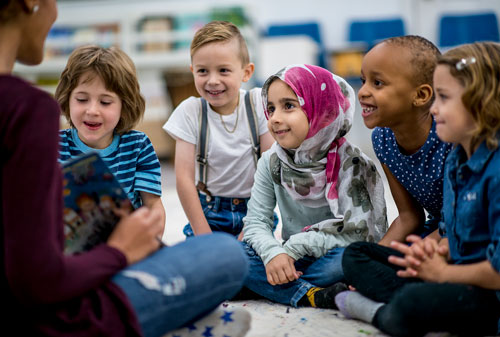
In his book A Parents' and Teachers guide to Bilingualism, Professor Colin Baker says “Young children pick up languages so easily. Language is acquired unwittingly, subconsciously. Language among children is caught rather than taught. The process is not learning but acquisition...”
Children in Welsh-medium settings in the early years acquire new languages through the language immersion method, which is a way of introducing a second language. Children will be immersed in a language when they receive their education in a language that is different from the language used at home. Welsh is used as they play and interact, and take part in activities. This means that children are surrounded by the language and acquire it in a natural way without them realising.
Practitioners have a very important role in supporting children to acquire a new language. The linguistic development of children depends on them consistently hearing the Welsh language in all activities. Practitioners need to join in with the children's activities to offer them linguistic clues.
Practitioners need to speak Welsh all the time in order for the children to be surrounded by the language. Practitioners are linguistic role models for children, which means they need to speak Welsh with the other staff. If they don't do this, children won't hear practical examples of the language being used. It's important that practitioners don't use the 'sandwich' method of presenting Welsh, which is to say the word/information in Welsh-English-Welsh, e.g. ‘diod-drink-diod’. By using this approach, children will realize that they don't need to take any notice of the new language and will focus on the language they already know.
By planning different activities and themes, children can develop their knowledge and understanding of Wales. Practitioners need to provide opportunities for children to learn about their local area and other areas of Wales, e.g. beaches, rivers and mountains. This will help children feel that they belong to their local community and Wales and will develop an understanding of the unique cultural identity of Wales.
It's vitally important to respect the children’s home language and try to make learning Welsh fun. Children who are educated in a language that is different from the home language have a unique identity. It's important that practitioners value the identity as well as the child's right to use their language of choice, so that they enjoy speaking the language and learn it in a completely natural way. These principles are supported by legislation that makes it unlawful to punish children for not speaking Welsh, namely:
The Foundation Phase Framework in Wales contributes to the Welsh curriculum, where the statutory learning subject includes Welsh Language Development. Therefore, it's vital that Welsh-medium education settings follow the code of practice and language policies of the workplace.
Dywed yr Athro Colin Baker yn ei lyfr A Parents’ and Teachers’ guide to Bilingualism, “Young children pick up languages so easily. Language is acquired unwittingly, subconsciously. Language among children is caught rather than taught. The process is not learning but acquisition...”
Mae plant mewn lleoliadau cyfrwng Cymraeg yn y blynyddoedd cynnar yn caffael ieithoedd newydd trwy’r dull trochi iaith, sef ffordd o gyflwyno ail iaith. Bydd plant yn cael eu trochi mewn iaith pan fyddant yn derbyn eu haddysg mewn iaith sy’n wahanol i iaith y cartref. Caiff y Gymraeg ei defnyddio wrth iddynt chwarae a rhyngweithio, a chymryd rhan mewn gweithgareddau. Mae hyn yn golygu bod plant yn cael eu hamgylchynu gan yr iaith ac yn ei chaffael mewn ffordd naturiol heb iddynt sylweddoli.
Mae gan ymarferwyr rôl bwysig iawn wrth gefnogi plant i gaffael iaith newydd. Mae datblygiad ieithyddol plant yn dibynnu ar glywed y Gymraeg yn gyson ym mhob gweithgaredd. Mae angen i ymarferwyr ymuno gyda gweithgareddau’r plant er mwyn cynnig cliwiau ieithyddol iddynt.
Er mwyn i blant gael eu hamgylchynu gan yr iaith mae angen i ymarferwyr siarad Cymraeg drwy’r amser. Mae ymarferwyr yn fodel rôl ieithyddol i blant, sy’n golygu bod angen iddynt siarad Cymraeg gyda’r staff eraill. Os nad ydynt yn gwneud hyn, ni fydd plant yn clywed enghreifftiau ymarferol o’r iaith yn cael eu defnyddio. Mae’n bwysig nad yw ymarferwyr yn defnyddio’r ‘dull brechdan’ o gyflwyno’r Gymraeg, sef dweud y gair/gwybodaeth mewn Cymraeg-Saesneg-Cymraeg, e.e. ‘diod-drink-diod’. Drwy arfer gyda’r dull hwn, bydd plant yn dod i ddeall nad oes angen iddynt gymryd sylw o’r iaith newydd ac yn canolbwyntio ar yr iaith maent yn ei wybod yn barod.
Drwy gynllunio gwahanol weithgareddau a themâu, gall plant ddatblygu eu gwybodaeth a’u dealltwriaeth o Gymru. Mae angen i ymarferwyr ddarparu cyfleoedd i blant ddysgu am eu hardal leol ac ardaloedd eraill yng Nghymru, e.e. traethau, afonydd a mynyddoedd. Bydd hyn yn cefnogi plant i deimlo eu bod yn perthyn i’w cymuned leol a Chymru a datblygu dealltwriaeth am hunaniaeth ddiwylliannol unigryw Cymru.
Mae’n hanfodol bwysig parchu iaith cartref y plant a cheisio gwneud dysgu’r Gymraeg yn hwyliog. Mae gan blant sy’n derbyn eu haddysg mewn iaith sy’n wahanol i iaith y cartref hunaniaeth unigryw. Mae’n bwysig fod ymarferwyr yn gwerthfawrogi’r hunaniaeth yn ogystal â hawl plant i ddefnyddio eu dewis iaith fel eu bod yn mwynhau siarad yr iaith a’i dysgu mewn ffordd hollol naturiol. Mae’r egwyddorion hyn yn cael eu cefnogi gan ddeddfwriaeth sy’n ei gwneud yn anghyfreithlon i gosbi plant am beidio siarad Cymraeg, sef:
Mae Fframwaith y Cyfnod Sylfaen yng Nghymru yn cyfrannu at y cwricwlwm Cymreig, lle mae’r maes dysgu statudol yn cynnwys Datblygu’r Gymraeg. Felly, mae’n hollbwysig bod lleoliadau addysg cyfrwng Cymraeg yn dilyn côd ymarfer a pholisïau iaith y gweithle.

For children to learn a new language, it's essential that they become immersed for them to become bilingual. Therefore, it's vitally important for practitioners to ensure that they speak Welsh at all times while the children are in the setting. There are several reasons for this, for example:
Practitioners need to understand how children learn and process a new language, and some of the mistakes they make include:
In addition, when constantly speaking the immersion language with children, they learn the language much faster, which consequently helps them:
I blant ddysgu iaith newydd, mae’n allweddol eu bod yn cael eu trochi er mwyn datblygu i fod yn ddwyieithog. Felly, mae’n hanfodol bwysig i ymarferwyr sicrhau eu bod yn siarad Cymraeg drwy’r amser tra bod y plant yn y lleoliad. Y mae sawl rheswm am hyn, er enghraifft:
Mae ymarferwyr angen deall sut mae plant yn dysgu a phrosesu iaith newydd, a rhai o gamgymeriadau y maent yn ei wneud yw:
Yn ogystal â hyn, wrth siarad yr iaith drochi’n gyson gyda phlant, maent yn caffael yr iaith yn llawer iawn cynt, sydd, o ganlyniad yn eu cefnogi i:
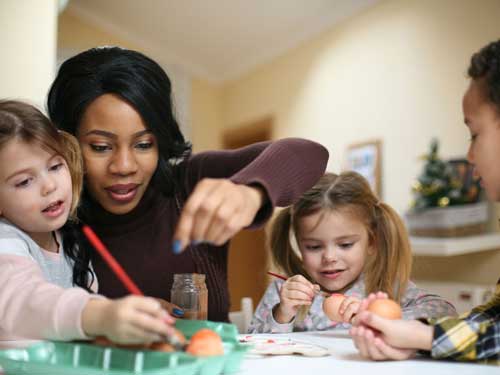
Although languages are complex to learn, children understand the grammar of their natural language before the age of five. When learning a new language, children will use two sets of grammatical rules.
When immersed in a new language, children move through several stages. These stages can vary from child to child, depending on their personal experiences or circumstances.
Er bod ieithoedd yn gymhleth i’w dysgu, mae plant yn deall gramadeg eu hiaith naturiol cyn eu bod yn bump oed. Wrth ddysgu iaith newydd, bydd plant yn defnyddio dwy set o reolau gramadegol.
Wrth gael eu trochi mewn iaith newydd, mae plant yn symud drwy sawl cam. Gall y camau hyn amrywio o blentyn i blentyn, yn dibynnu ar eu profiadau neu eu hamgylchiadau personol.
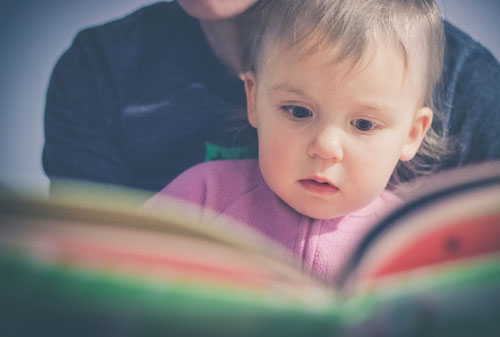
A child's individual circumstances can have an impact on the way they acquire the immersion language.
The language used at home is important as a child learns a new language. If the parents/carers can speak the immersion language, they can offer the child support by practicing the language, reading books together, listening to music, playing games, and so on.
If the child has regularly heard the immersion language before attending the setting, he can build on this, which is a great advantage when learning a new language. It's important that the setting is aware of each child's linguistic circumstances before they start at the establishment. This gives ideas on how to plan and is an opportunity to set the baseline for each child's development at the start of their journey to learning a new language.
One of the main elements of a child's language acquisition is the setting's environment and how comfortable the child is in this location. Practitioners should ensure that linguistic resources are available for children with additional learning needs.
Immersing children in Welsh should take into account special educational needs. This is when a child has significant learning difficulties compared with other pupils of the same age.
These children can have difficulty acquiring a new language. Therefore, the steps below need to be taken to give them the best possible support:
https://www.bdadyslexia.org.uk/educator/modern-foreign-languages
When learning a new language, children need the support of parents and carers. It's therefore essential that they are included in the life of the setting. Parents and carers play an important role in the process of their child acquiring a language. By building a close relationship with the setting, this helps them feel comfortable enough to ask questions or discuss any concerns they may have about their children's language development. To strengthen the relationship, parents/carers can occasionally volunteer at the setting. This is an effective way of learning the immersion language with the child, as well as building the parent/carer's confidence.
Many early years settings encourage parents/carers to participate in their children's language journey by:
Mae amgylchiadau unigol plentyn yn gallu cael effaith ar y ffordd mae’n caffael yr iaith drochi.
Mae iaith y cartref yn bwysig wrth i blentyn ddysgu iaith newydd. Os yw’r rhieni/gofalwyr yn gallu siarad yr iaith drochi, maent yn gallu cynnig cefnogaeth i’r plentyn drwy ymarfer yr iaith, darllen llyfrau gyda’i gilydd, gwrando ar fiwsig, chwarae gemau, ac yn y blaen.
Os yw’r plentyn wedi clywed yr iaith drochi’n gyson cyn mynychu’r lleoliad, mae’n gallu adeiladu ar hyn, sydd yn o fantais fawr wrth ddysgu iaith newydd. Mae’n bwysig bod y lleoliad yn ymwybodol o amgylchiadau ieithyddol pob plentyn cyn iddynt gychwyn yn y lleoliad. Mae hyn yn rhoi syniadau ar gyfer cynllunio, ac yn gyfle i osod y llinell sylfaen ar gyfer datblygiad i bob plentyn ar gychwyn eu taith wrth ddysgu iaith newydd.
Un o brif nodweddion caffael iaith plentyn yw amgylchedd y lleoliad a pha mor gyfforddus yw’r plentyn yn y lleoliad hwn. Dylai ymarferwyr sicrhau bod adnoddau ieithyddol yn eu lle ar gyfer plant sydd ag anghenion dysgu ychwanegol.
Wrth drochi plant yn y Gymraeg, mae’n ystyried anghenion addysgol arbennig. Mae hyn yn golygu bod gan blentyn anawsterau dysgu arwyddocaol o’i gymharu â disgyblion eraill o’r un oedran.
Mae’r plant hyn yn gallu cael trafferth caffael iaith newydd. Felly, mae angen cymryd y camau isod i roi’r gefnogaeth orau posib iddynt:
https://www.bdadyslexia.org.uk/educator/modern-foreign-languages
Wrth ddysgu iaith newydd, mae plant angen cefnogaeth rhieni a gofalwyr. Felly, mae’n hanfodol eu bod yn cael eu cynnwys ym mywyd y lleoliad. Mae rhieni a gofalwyr yn chwarae rhan bwysig yn y broses o’u plant yn caffael iaith. Wrth feithrin perthynas agos gyda’r lleoliad, mae hyn yn eu galluogi i deimlo’n ddigon cyfforddus i ofyn cwestiynau neu drafod unrhyw bryderon sydd ganddynt ynglŷn â datblygiad ieithyddol eu plant. Er mwyn cryfhau’r berthynas, gall rhieni/gofalwyr wirfoddoli yn y lleoliad yn achlysurol. Mae hyn yn ffordd effeithiol o ddysgu’r iaith drochi gyda’r plentyn, yn ogystal â magu hyder y rhiant/gofalwr.
Mae sawl lleoliad blynyddoedd cynnar yn annog rhieni/gofalwyr i gymryd rhan yn nhaith ieithyddol eu plant drwy:
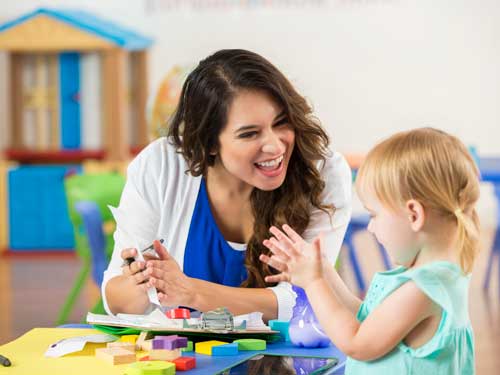
It's vitally important to respect the child’s home language and try to make learning Welsh fun. Children who are educated in a language that is different to the home language have a unique identity. It's important that practitioners value the identity as well as the child's right to use their language of choice so that they enjoy speaking the language and learn it in a completely natural way. These principles are supported by legislation that makes it unlawful to punish children for not speaking Welsh, namely:
Although it's the immersion language that should always be used with the children, there are times when the child's natural language needs to be spoken, in circumstances such as:
It must be remembered that when learning a new language, children can feel lost, confused or even scared. They don't understand what's being said, so this must be considered if the child is not happy when practitioners speak Welsh. The child may need a little more time to cope with the immersion language. It's therefore very important not to force the child to speak Welsh during this time. Continuing to speak Welsh is acceptable but body language/facial expressions should be used to reinforce what is being said.
Mae’n hanfodol bwysig parchu iaith gartref plant a cheisio gwneud dysgu’r Gymraeg yn hwyliog. Mae gan blant sy’n derbyn eu haddysg mewn iaith sy’n wahanol i iaith y cartref hunaniaeth unigryw. Mae’n bwysig bod ymarferwyr yn gwerthfawrogi’r hunaniaeth yn ogystal â hawl plant i ddefnyddio eu dewis iaith fel eu bod yn mwynhau siarad yr iaith a’i dysgu mewn ffordd hollol naturiol. Mae’r egwyddorion hyn yn cael eu cefnogi gan ddeddfwriaeth sy’n ei gwneud yn anghyfreithlon i gosbi plant am beidio â siarad Cymraeg, sef:
Er mai’r iaith drochi y dylid ei defnyddio pob amser gyda’r plant, mae adegau pan fydd angen siarad iaith naturiol y plentyn, mewn amgylchiadau megis:
Mae’n rhaid cofio bod plant, wrth ddysgu iaith newydd, yn gallu teimlo ar goll, yn ddryslyd neu hyd yn oed yn ofnus. Nid ydynt yn deall beth sydd yn cael ei ddweud, felly mae’n rhaid ystyried hyn os nad yw’r plentyn yn hapus wrth i ymarferwyr siarad Cymraeg. Efallai bod y plentyn angen ychydig mwy o amser i ddygymod â’r iaith drochi. Fodd bynnag, mae’n bwysig iawn i beidio â gorfodi’r plentyn i siarad Cymraeg yn ystod y cyfnod hwn. Mae parhau i siarad Cymraeg yn dderbyniol ond rhaid ceisio defnyddio iaith y corff/ystumiau wyneb i atgyfnerthu’r hyn sy’n cael ei ddweud.
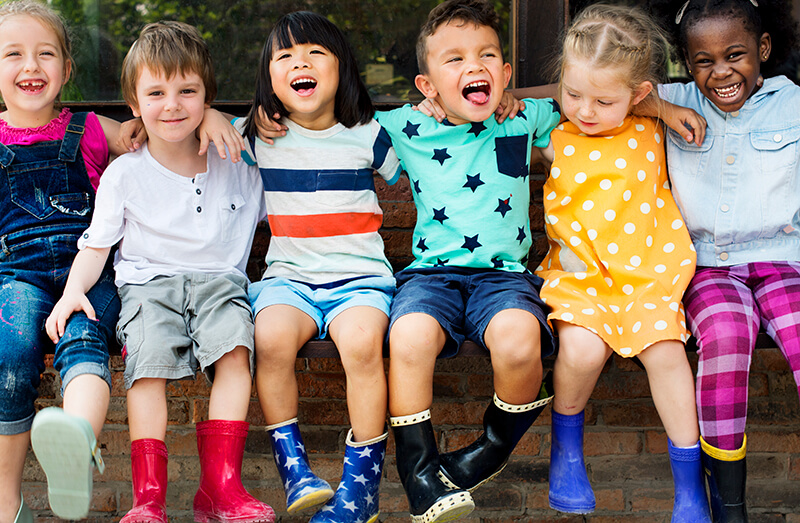
Being able to speak Welsh is a great advantage for young people in Wales when looking for jobs. Since the Welsh Language Act 1993 and the publication of 'Iaith Pawb' in 2003, there has been far greater use of the Welsh language in all aspects of life in Wales.
Being bilingual or multilingual from an early age means that moving from a Welsh-medium playgroup or nursery to a Welsh-medium or bilingual school will be a natural development for children. This is especially true if several children from the same group move together. Progression is very important to children.
Being bilingual means that children from non-Welsh speaking backgrounds can read, write, speak, understand and use Welsh as well as those children from Welsh speaking homes. Bilingual children tend to do well within the curriculum and perform better in examinations. Bilingual or multilingual children can be more flexible, sensitive and creative as they have an understanding that there is more than one word to describe an object or concept. Learning a second language from an early age helps children hear different languages and helps them learn a third or fourth language as they grow older.
When both parents speak different languages, a bilingual child can communicate and develop a close relationship with both. One of the benefits of being bilingual is the opportunity of being part of two cultures which can lead to a better understanding of different traditions and ways of thinking.
There are many other benefits to being bilingual or multilingual:
Mae gallu siarad Cymraeg yn fantais fawr i bobl ifanc yng Nghymru wrth iddyn nhw chwilio am swyddi. Ers Deddf yr Iaith Gymraeg 1993 a chyhoeddi ‘Iaith Pawb’ yn 2003, mae llawer mwy o ddefnydd o’r iaith Gymraeg ym mhob agwedd o fywyd yng Nghymru.
Mae bod yn ddwyieithog neu’n amlieithog o oedran cynnar yn golygu bydd symud o gylch meithrin neu feithrinfa cyfrwng Cymraeg i ysgol cyfrwng Cymraeg neu ddwyieithog yn ddatblygiad naturiol i blant. Bydd hyn yn wir, yn enwedig os oes nifer o blant o'r un grŵp yn symud gyda'i gilydd. Mae dilyniant yn bwysig iawn i blant.
Mae bod yn ddwyieithog yn golygu bod plant o gefndiroedd di-Gymraeg yn gallu darllen, ysgrifennu, siarad, deall a defnyddio'r Gymraeg cystal â phlant o gartrefi Cymraeg eu hiaith. Mae plant dwyieithog yn tueddu i gyflawni’n uchel o fewn y cwricwlwm ac i berfformio’n well mewn arholiadau. Gall plant dwyieithog neu amlieithog fod yn fwy hyblyg, sensitif a chreadigol gan fod ganddynt ddealltwriaeth fod mwy nag un gair i ddisgrifio gwrthrych neu gysyniad. Mae dysgu ail iaith o oed cynnar yn helpu plant i allu clywed gwahanol ieithoedd a’u cefnogi wrth ddysgu trydedd neu bedwaredd iaith wrth iddynt dyfu’n hŷn.
Pan fydd y ddau riant yn siarad ieithoedd gwahanol, gall plentyn dwyieithog gyfathrebu a datblygu perthynas agos gyda’r ddau. Un o fanteision bod yn ddwyieithog yw'r cyfle i fod yn rhan o ddau ddiwylliant sy’n gallu arwain at well dealltwriaeth o wahanol draddodiadau a ffyrdd o feddwl.
Mae sawl mantais arall i fod yn ddwyieithog neu’n amlieithog: